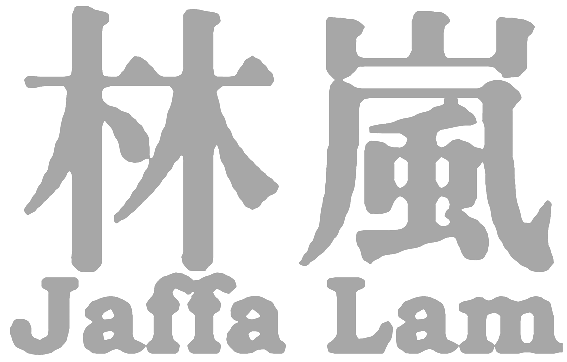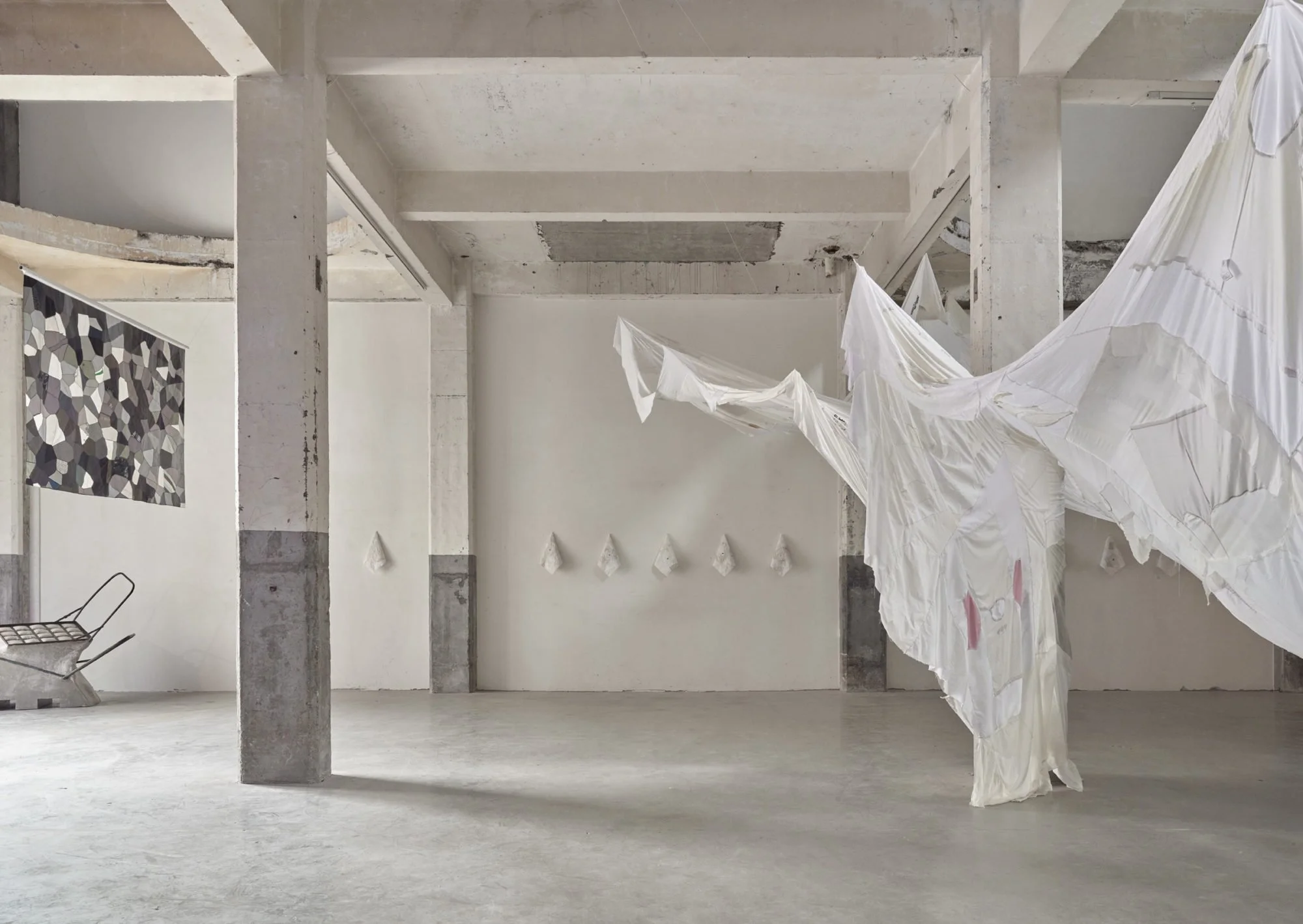Jaffa Lam: Sailing
林嵐:航行
Stokerijstraat 19, 2110 Wijnegem Belgium 維伍德畫廊 安特衛普
September 30, 2023 - January 13, 2024
Kunst uit Hongkong in Wijnegem: "Ik sta niet op de barricades, maar ik vertolk de stem van de zwijgende meerderheid" | VRT NWS: nieuws
Remarkable work by Chinese-Hong Kong artist Jaffa Lam will be on display at the Axel Vervoordt Gallery in Wijnegem until the end of this year. In her first solo exhibition on European soil, she subtly comments on the social and political changes in Hong Kong. She does so by giving discarded clothes and discarded trolleys and crates a second life.
Two years ago, Jaffa Lam decided to burn all her unsold work on her 50th birthday. "My studio was getting too small and I needed space to make new things" she says. "Occasionally I did get invited to a group exhibition, but when it was over, my work was always returned. There were no interested buyers, so I saw no other solution."
But that changed when she received a call from the Axel Vervoordt Gallery with the offer of a solo exhibition. "My mouth fell open," she says, "a solo exhibition, are you serious, for me?" A year ago, her first exhibition opened in Hong Kong and from 1 October, her work will also be on show at the Axel Vervoordt Gallery in Wijnegem near Antwerp.
Second-hand clothes
In 1985, Lam immigrated to Hong Kong with her parents from Fujian province in search of a better life. "My mother was a doctor in China, but her degree was not recognised, so she went to work as a labourer in a textile factory." Jaffa Lam was also put to work there as a 12-year-old cutting loose threads from finished garments. Per dozen clothes, she earned 20 cents.
At 20, she got a place in the prestigious art department of the Chinese University of Hong Kong, where she still teaches today. After her studies, she led a wandering existence for 10 years with residencies on different continents. When she returned in 2008, Hong Kong had changed completely. "All the textile factories had moved to China," she says, "and the workers had lost their jobs."
As an artist, Lam falls back on the knowledge she gained in the factory: she stitches large canvases with second-hand clothes, working with a group of discarded stitchers. Wijnegem also features a delicate white collar, a reference to Antwerp's rich past. She sewed the collar by hand from a piece of net curtain she found in a local Oxfam shop.
"In every new city, I look for second-hand shops, I get to know people through their clothes. As a result, I always end up in migrant neighbourhoods, the kind of neighbourhood where I myself lived as a child."
"I want to show that everything has value," says Jaffa Lam, "clothes, like people, deserve a second chance and an opportunity to shine." For a project involving discarded trolleys she found at a scrap yard in Hong Kong, she worked with retired welders.
Umbrella protests
Another material she often works with are discarded umbrellas. She transforms these into large parachutes or multicoloured flags. But since the political "umbrella protests", umbrellas are suspect in Hong Kong. A work made out of umbrellas in all shades of grey and grey-blue hangs in Wijnegem. "It interprets how many people feel in Hong Kong now," she says "grey, downcast and silent."
In another work, Lam incorporated white clothes of 14 friends who left Hong Kong after the large-scale political protests into a large sail. At the foot of the tarpaulin is a large mound of earth, from Wijnegem. The moisture from the earth slowly penetrates the white tarpaulin. "My friends are also immigrants now," she says, "and I hope they can take root here in Europe and elsewhere." From white umbrella fabric, she also made 14 lampshades that hang on the wall.
The skin of the sea
Can she still express herself as an artist in Hong Kong and China? "Since the introduction of the national security law in 2020, I have to be careful," she says. "But art is a beautiful language with many layers. In each layer, you can put a different meaning. I am not someone who stands on the barricades shouting slogans. But I do try to interpret the thoughts and feelings of ordinary people. Thinking is not forbidden, is it?"
One particular work is a long plank, which seems to float in space, recycled from a pine crate. "Pine is another material that many artists look down on," she says. "It is too soft and is mostly used for pallets and crates. But I find it very rewarding to work with." The board symbolises the surface of the sea. "I call it the skin of the sea," she says. "That is all we can see, but everyone knows there is a whole ocean underneath that surface."
Source:Axel Vervoordt Gallery






